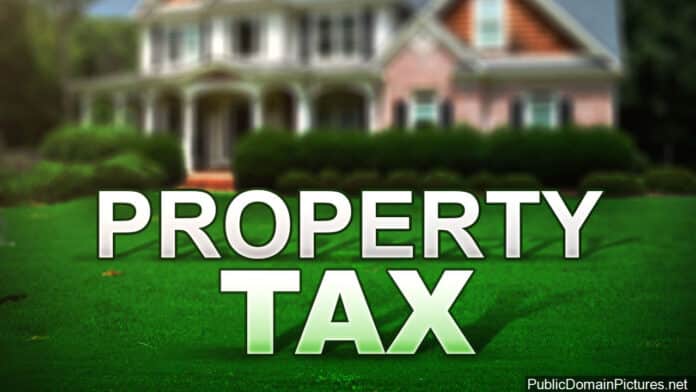Homeowners in Hidalgo and Starr counties are facing higher property values this year mainly due to an increase in demand for housing and low inventory. The appraisals can be protested, but the deadline to file is quickly approaching.
“The market right now has increased so dramatically over the last year,” Hidalgo County Assistant Chief Appraiser Jorge Gonzalez said.
Those looking to buy a house currently will realize the market favors the buyer. It’s what’s known as a seller’s market.
Appraisers in Texas must appraise the home according to its market value as of
Jan. 1 of that tax year, according to the Texas Property Tax Code.
Homes that went up for sale in January spent fewer days on the market and the inventory depleted faster than it did during the same time last year. Texas Realtors’ data also found the trend held steady throughout the first quarter of 2021.
According to the Texas Realtor’s first quarter report, in Texas, a home spent an average of 13 days less on the market this year than it did during the same period last year. The inventory available also decreased from a three-month supply during the first quarter of 2020 to 1.3 months worth of inventory this year.
“That’s supply and demand,” Gonzalez explained. “Once the inventory starts going down, it starts kicking up the prices, or the values.”
Mortgage rates which dropped under 3% since March 2020, according to data from Freddie Mac, are suspected to be driving the market. The rates picked up in March and April of this year, but it’s held steady under 3% for the last three weeks.
“There’s been a lot of activity as far as transactions, and the reason being is the low interest rates, the mortgage rates, which has caused the inventory of homes to go down and has caused the increase in values,” Gonzalez explained.
Home improvement or expansion projects will often lead to an increase in value, but the rise in demand will affect homes that were left unchanged and those that won’t go on sale.
“The law does not distinguish whether you’re buying or selling,” Gonzalez said. “If the market is going up, you need to adjust all of these homes accordingly.”
CHECKS AND BALANCES
Property owners are only one of three parties that have a stake in property values. Taxing entities like school districts, hospital districts, universities, etc., expect certain revenues from the values placed on properties within their jurisdiction.
Often, these two parties will be in conflict about values set by the appraisal district. The public will request lower valuations, while the taxing entities will request the opposite.
To help ensure compliance to the tax code, the Texas Comptroller of Public Accounts will audit the county appraisal districts every other year to ensure their appraisals are close to the state’s own estimates.
Starr County’s Chief Appraiser Rosalva Guerra explained the Texas Comptroller of Public Accounts will send surveys to property owners and use that to calculate the value of different real estate, like single family residential properties. Then, they’ll compare their values to the county appraisal office’s value expecting it to fall close to the 1.0 ratio.
For the last several years, the Starr County Appraisal District has failed to reach the state’s valuation.
“If we don’t appraise it at its fair market value, the schools are going to lose funds,” Guerra said.
A preliminary report for Rio Grande City CISD found that the 2020 values for single family residential properties were appraised at about 0.71 of the 1.0 ratio.
Homes under the taxing jurisdiction of Roma ISD were also under appraised, according to the 2020 preliminary report from the Texas Comptroller of Public Accounts.
Rio Grande City CISD is losing about $4.4 million a year and Roma ISD is losing about $3.4 million a year in taxes, Guerra said, because properties are under the state’s estimated appraisals.
Guerra said the county received a letter from the state declaring that their appraisals are invalid and must be improved. Slowly, throughout the years, they’ve been inching closer to the state’s valuation.
Property owners who received letters this year and who were financially impacted by the pandemic have presented their complaints with the appraisal district.
Guerra sympathizes with their calls for clemency, but explained, “we’re in the middle, but it’s a job we have to do.”
PROTESTING VALUE
Property owners have 30 days from the date the county appraisal district sends a letter informing them of their value to file a protest.
“If they think it’s too large, the amount, they can come in and let us know,” Guerra said. “Or if they have proof that it can sell for less, bring it over. We welcome all that information. We need it.”
Property owners can file their protest online or in person, although Gonzalez said the process is streamlined and quicker if protests are filed electronically.
Once it reaches the appraisal district, they can determine to change the value. Challenges are to be expected.
“This year, the relief is going to be more difficult, only because of the market,” Gonzalez explained, referring to the increase in demand for residential property.
If the appraisal district cannot make an adjustment, the property owner can dispute that before the Appraisal Review Board, an independent panel, separate from the appraisal district. The ARB hears the evidence from the property owner and appraisers to make a final determination on the value.
Photos of the property showing damage or repairs needed, comparables of values for nearby residences, receipts, and any other pertinent evidence is encouraged.
Gonzalez stressed using their online portal. In a county with nearly a million people, about 95 employees and no satellite offices, filing a protest electronically would simplify the paperwork.
The deadline for homeowners to file a protest in Hidalgo County is May 17.
In Starr County, the deadline for homeowners to file their protest is May 15.





